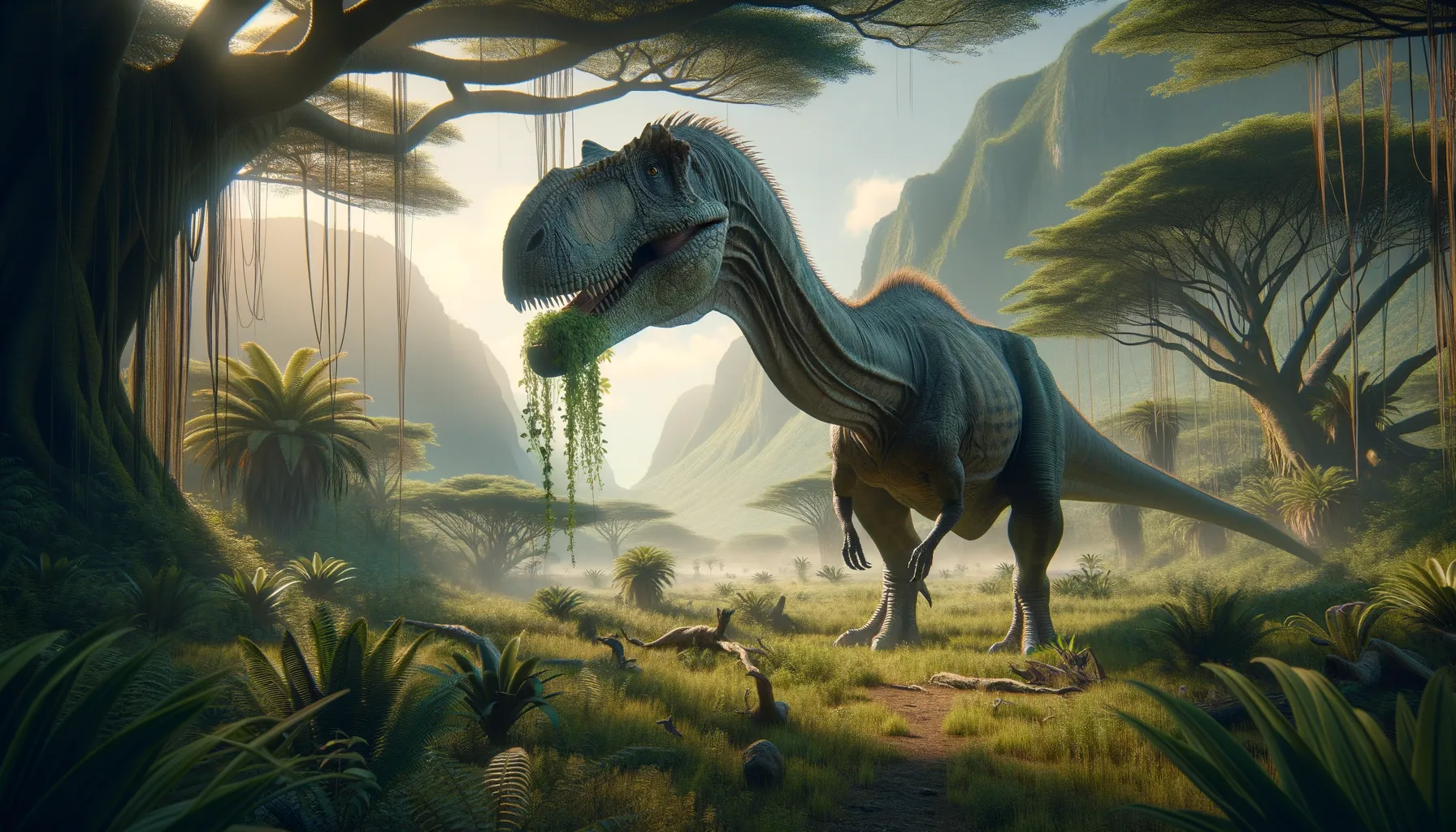
Galveosaurus
The gentle giant of the Jurassic age.
Period
Jurassic
Length
Roughly 15 meters long.
Height
Around 5 meters at the shoulder.
Weight
Approximately 4 to 5 tons.
Galveosaurus was a large, plant-eating dinosaur that roamed the earth during the Late Jurassic period. Known for its massive size, it was a sauropod, meaning it had a long neck and tail, which helped it reach and consume vegetation in various heights. Even with its immense size, this gentle giant likely moved slowly and relied on its sheer size for protection against predators.
Diet
Galveosaurus was herbivorous, feeding mainly on ferns, cycads, and conifers. Its long neck allowed it to reach high branches, consuming a variety of plant material for nutrition.
Hunting
As a herbivore, Galveosaurus did not hunt other animals. Instead, it focused on foraging for plentiful plant life in its environment, using its long neck to access vegetation in trees and across vast areas.
Environmental challenges
Galveosaurus faced challenges such as finding enough food to support its massive size, especially during periods of drought or seasonal change. Predators were another concern, although its size offered significant protection. Changes in habitat due to shifts in climate or geological activity also posed threats to its survival.
Speed
Likely slow-moving due to its size.
Lifespan
Estimated to be around 50-70 years.
First discovery
Discovered in the early 21st century in Spain.
Fun Facts
- Galveosaurus was a long-necked dinosaur that lived during the Late Jurassic period over 160 million years ago.
- It belonged to a group of dinosaurs known as sauropods, which were famous for their large size and impressive necks.
- Galveosaurus was discovered in the province of Teruel, Spain, and its name comes from the town of Galve where it was found.
- This dinosaur mainly ate plants and could use its long neck to reach high branches or sweep low vegetation.
- Galveosaurus coexisted with other dinosaurs and creatures in its habitat, making it a part of a complex ecosystem.
- Its fossil remains have provided valuable insights into sauropod anatomy and behavior.
- Paleontologists are excited about Galveosaurus because it helps fill in the gaps of our understanding of European dinosaurs during the Late Jurassic.
Growth and Development
From hatching to adult size, Galveosaurus experienced rapid growth, a common trait among large dinosaurs. Early years were crucial as they were more vulnerable to predators. It depended on vast amounts of vegetation to support its immense body during its growth phase.
Habitat
Galveosaurus lived in what is now modern-day Spain, in environments that were warm and lush, abundant with vegetation. These environments were typically floodplains or forested areas that provided ample food sources. The rich plant life was essential for sustaining its plant-based diet.
Interaction with other species
Galveosaurus coexisted with other dinosaurs, including some predators, although its size likely deterred many attacks. It may have shared grazing lands with other herbivorous dinosaurs, potentially leading to competition for food. Smaller species might have found protection by following herds of Galveosaurus.
Natural lifespan
Its natural lifespan was likely between 50 and 70 years.
Reproduction
Galveosaurus, like other sauropods, likely laid eggs. Nesting in groups may have increased the survival rate of the offspring, providing safety in numbers. The young had to grow quickly to avoid predation, reaching significant size within a few years.
Social behaviour
It likely moved in herds, which offered protection and increased access to food resources. The social structure might have been loose, with individuals coming and going, but the presence of a group could deter predators.
Fossil locations
Fossils of Galveosaurus have been primarily found in Spain, providing important insights into the Late Jurassic ecosystems of the Iberian Peninsula. This discovery has enhanced understanding of sauropod distribution across Europe during this period.
